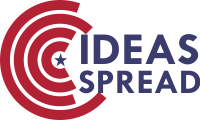Developing Factors and Indicators of Growth Mindset for School Administrators in Thailand
Abstract
The sustainability of educational administration is depending on school administrators’ growth mindset. A growth mindset is detected to have a direct relationship with school achievement and success. Despite being an integral part of school leadership, the growth mindset of school administrators has been ignored by past researchers. Hence, this research is designed to investigate the growth mindset’s significant factors and indicators of high school administrators in Thailand. The researchers employed a quantitative approach survey design. A total of 460 school administrators and teachers participated in a survey using a multi-stage sampling technique. The researchers intended to test whether the identified factors and indicators are fitting with empirical data as the ultimate research outcome. The results revealed that there are a total of 17 indicators derived from the six factors in a growth mindset model. The measurement model of growth mindset is corroborated to the empirical data, with χ2=64.875, df=50, χ2/df=1.2975, CFI=0.99, TLI=0.99, RMSEA=0.02, and SRMR=0.01. In conclusion, the developed growth mindset model for high school administrators has a goodness-of-fit with the attained data. Finally, the results of this research have successfully proposed a measurement model that would be guidelines for school administrators to grow their positive mindset as our major contribution to the educational administration field.
References
Becker, J. M., & Ismail, I. R. (2016). Accounting for sampling weights in PLS path modeling: Simulations and empirical examples. European Management Journal, 34(6), 606-617. https://doi.org/10.1016/j.emj.2016.06.009
Boonmepipit, P., & Jiamjan, J. (2020). Educational administration in Thailand 4.0. SVIT Journal, 6(2). Retrieved from https://so04.tci-thaijo.org/index.php/svittj/article/view/240031
Byrne, B. M. (1998). Structural equation modeling with LISREL, PRELIS and SIMPLIS: Basic concepts, applications and programming. Mahwah, NJ: Lawrence Erlbaum Associates.
DeWitt, P. (2020). Why leaders need to develop their own growth mindset. Retrieved from https://www.edweek.org/education/opinion-why-leaders-need-to-develop-their-own-growth-mindset/2020/11
Dweck, C. S. (2006). Mindset: The new psychology of success. New York: Random House.
Diamantopoulos, A., & Siguaw, J. A. (2000). Introducing LISREL. London, UK: Sage. https://doi.org/10.4135/9781849209359
Elmore, R. F. (2019). The future of learning and the future of assessment. ECNU Review of Education, 2(3), 328-341. https://doi.org/10.1177/2096531119878962
Field, A. (2000). Discovering statistics using SPSS for Windows. London, UK: Sage.
Gay, L. R., Mills, G. E., & Airasian, P. W. (2011). Educational Research. New Jersey: Pearson Education.
Goldstein, S., & Brooks, R. B. (2007). Understanding and managing children’s classroom behavior: Creating sustainable, resilient schools (2nd ed.). New York: John Wiley & Sons.
Guidera, I. A. (2014). Principals implementing growth mindset norms: Insights on school culture reform (Doctoral dissertation). University of California, Los Angeles.
Hair, J. F., Black, W. C., Babin, B. J., & Anderson, R. E. (2013). Multivariate data analysis (7th ed.). London, UK: Pearson Education.
Hanson, J., Bangert, A., & Ruff, W. (2016). Exploring the relationship between school growth mindset and organizational learning variables: Implications for multicultural education. Journal of Educational Issues, 2(2), 222-242. https://doi.org/10.5296/jei.v2i2.10075
Hu, L. T., & Bentler, P. M. (1999). Cut-off criteria for fit indexes in covariance structure analysis: Conventional criteria versus new alternatives. Structural Equation Modeling, 6(1), 1-55. https://doi.org/10.1080/10705519909540118
Hutcheson, G. D., & Sofroniou, N. (1999). The multivariate social scientist: An introduction to generalized linear models. London, UK: Sage. https://doi.org/10.4135/9780857028075
Jöreskog, K., & Sörbom, D. (1993). LISREL 8: Structural equation modelling with the SIMPLIS command language. Chicago, IL: Scientific Software International Inc.
Kaiser, H. (1974). An index of factorial simplicity. Psychometrika, 39, 31-36. https://doi.org/10.1007/BF02291575
Lavrakas, P. J. (2008). Encyclopedia of survey research methods (Vols. 1-0). Thousand Oaks, CA: Sage. https://doi.org/10.4135/9781412963947
McDonald, R. P., & Ho, M. H. R. (2002). Principles and practice in reporting statistical equation analyses. Psychological Methods, 7(1), 64-82. https://doi.org/10.1037/1082-989X.7.1.64
Meador, D. (2019). The essential qualities of an effective school leader. Retrieved from https://wwwthonghtco.com/how-school-administrator-can-be-effective-leader-3194539
Pallant, J. (2013). SPSS survival manual: A step by step guide to data analysis using SPSS (4th ed.). New South Wales, Australia: Allen & Unwin. https://doi.org/10.1080/00396338.2013.784467
Rissanen, I., Kuusisto, E., Tuominen, M., & Tirri, K. (2019). In search of a growth mindset pedagogy: A case study of one teacher’s classroom practices in a Finnish elementary school. Teaching and Teacher Education, 77, 204-213. https://doi.org/10.1016/j.tate.2018.10.002
Schumacker, R. E., & Lomax, R. G. (2004). A beginner’s guide to structural equation modeling (2nd ed.). Mahwah, NJ: Lawrence Erlbaum Associates. https://doi.org/10.4324/9781410610904
Steiger, J. H. (2007). Understanding the limitations of global fit assessment in structural equation modeling. Personality and Individual Differences, 42(5), 893-898. https://doi.org/10.1016/j.paid.2006.09.017
Tuksino, P. (2009). A quality assessment of Science instructional Management in Basic Education Schools: An application of a value-added model and differential item functioning. (Unpublished Ph.D dissertation). Chulalongkorn University, Thailand.
Ullman, J. B. (2001). Structural equation modelling. In B. G. Tabachnick & L. S. Fidell (Eds.), Using Multivariate Statistics (4th ed & pp 653- 771). Needham Heights, MA: Allyn & Bacon.
Yamane, T. (1970). Statistic: An introductory analysis. Tokyo, Japan: Harper International Edition.


This work is licensed under a Creative Commons Attribution 4.0 International License.
Copyright for this article is retained by the author(s), with first publication rights granted to the journal.
This is an open-access article distributed under the terms and conditions of the Creative Commons Attribution license (http://creativecommons.org/licenses/by/4.0/).








1.png)

















